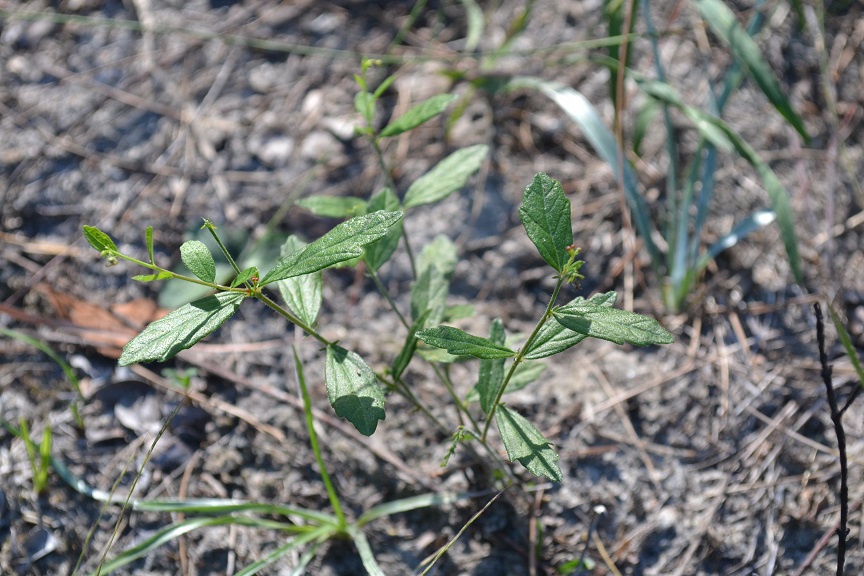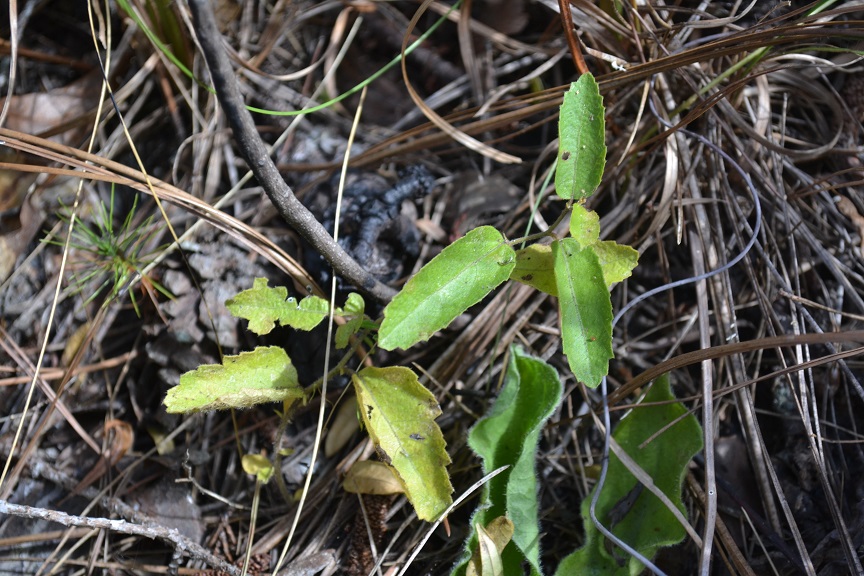Difference between revisions of "Tragia urens"
(→Photo Gallery) |
|||
| Line 26: | Line 26: | ||
==Ecology== | ==Ecology== | ||
===Habitat=== <!--Natural communities, human disturbed habitats, topography, hydrology, soils, light, fire regime requirements for removal of competition, etc.--> | ===Habitat=== <!--Natural communities, human disturbed habitats, topography, hydrology, soils, light, fire regime requirements for removal of competition, etc.--> | ||
| − | In the Coastal Plain in Florida and Georgia, ''T. urens'' has been found in sand of open woodlands, pine uplands, fallow fields, annually burned pineland, sandhills, sand pine scrub, longleaf pine/wiregrass communities, and open pine savannas (FSU Herbarium). | + | In the Coastal Plain in Florida and Georgia, ''T. urens'' has been found in sand of open woodlands, pine uplands, fallow fields, annually burned pineland, sandhills, sand pine scrub, longleaf pine/wiregrass communities, and open pine savannas (FSU Herbarium). Associated species include longleaf pine, sand pine, and wiregrass (FSU Herbarium). |
===Phenology=== <!--Timing off flowering, fruiting, seed dispersal, and environmental triggers. Cite PanFlora website if appropriate: http://www.gilnelson.com/PanFlora/ --> | ===Phenology=== <!--Timing off flowering, fruiting, seed dispersal, and environmental triggers. Cite PanFlora website if appropriate: http://www.gilnelson.com/PanFlora/ --> | ||
Revision as of 12:26, 15 December 2015
| Tragia urens | |
|---|---|

| |
| Photo by Kevin Robertson | |
| Scientific classification | |
| Kingdom: | Plantae |
| Division: | Magnoliophyta – Flowering plants |
| Class: | Magnoliopsida – Dicotyledons |
| Order: | Euphorbiales |
| Family: | Euphorbiaceae |
| Genus: | Tragia |
| Species: | T. urens |
| Binomial name | |
| Tragia urens L. | |
| File:TRAG UREN dist.jpghttp://plants.usda.gov/core/profile?symbol=TRUR | |
| Natural range of Tragia urens from USDA NRCS Plants Database. | |
Common name: Wavyleaf noseburn
Contents
Taxonomic notes
Description
Distribution
Ecology
Habitat
In the Coastal Plain in Florida and Georgia, T. urens has been found in sand of open woodlands, pine uplands, fallow fields, annually burned pineland, sandhills, sand pine scrub, longleaf pine/wiregrass communities, and open pine savannas (FSU Herbarium). Associated species include longleaf pine, sand pine, and wiregrass (FSU Herbarium).
Phenology
It has been observed flowering in April and May and fruiting May through September (FSU Herbarium).
Seed dispersal
Seed bank and germination
Fire ecology
Pollination
Use by animals
Diseases and parasites
Conservation and Management
Cultivation and restoration
Photo Gallery
References and notes
Florida State University Robert K. Godfrey Herbarium database. URL: http://herbarium.bio.fsu.edu. Last accessed: July 2015. Collectors: Loran C. Anderson, R. A. Norris, Robert K. Godfrey, Andre F. Clewell, Chris Cooksey, M. Davis, J. M. Kane, R. Komarek, Lisa Keppner, Cecil R Slaughter, Annie Schmidt. States and Counties: Florida: Duval, Franklin, Gadsden, Jackson, Leon, Osceola, Wakulla, Washington. Georgia: Thomas. Compiled by Tall Timbers Research Station and Land Conservancy.
